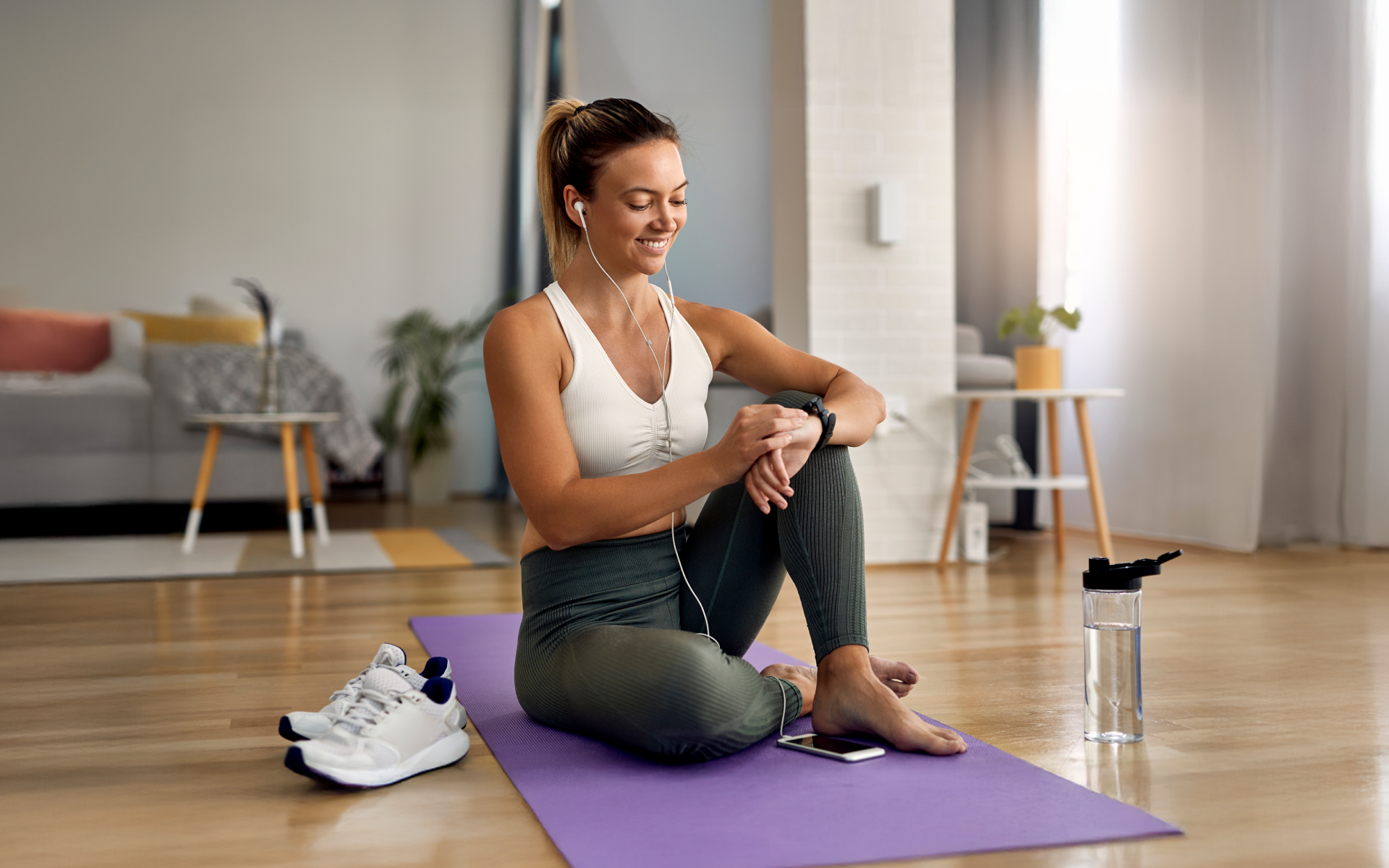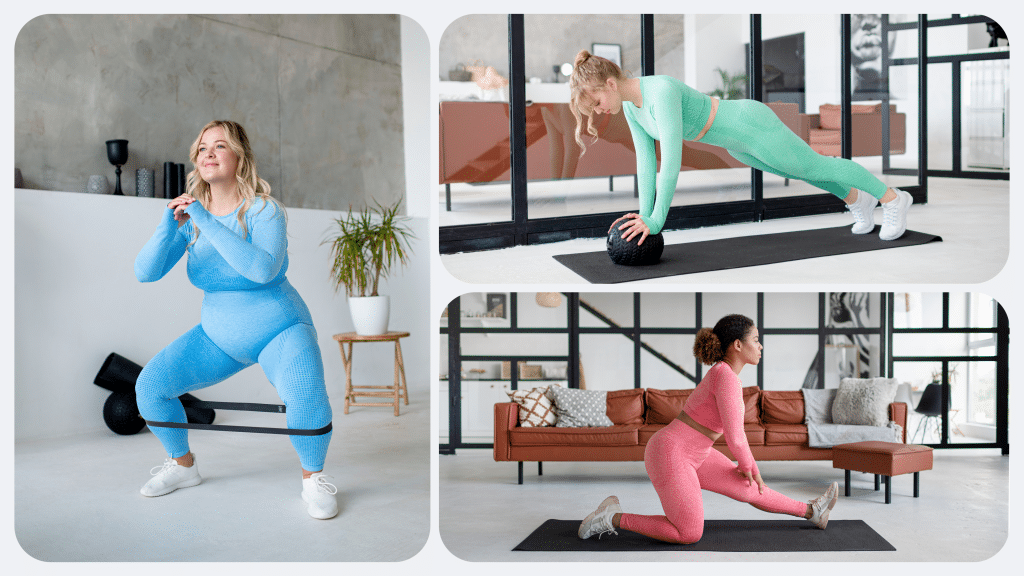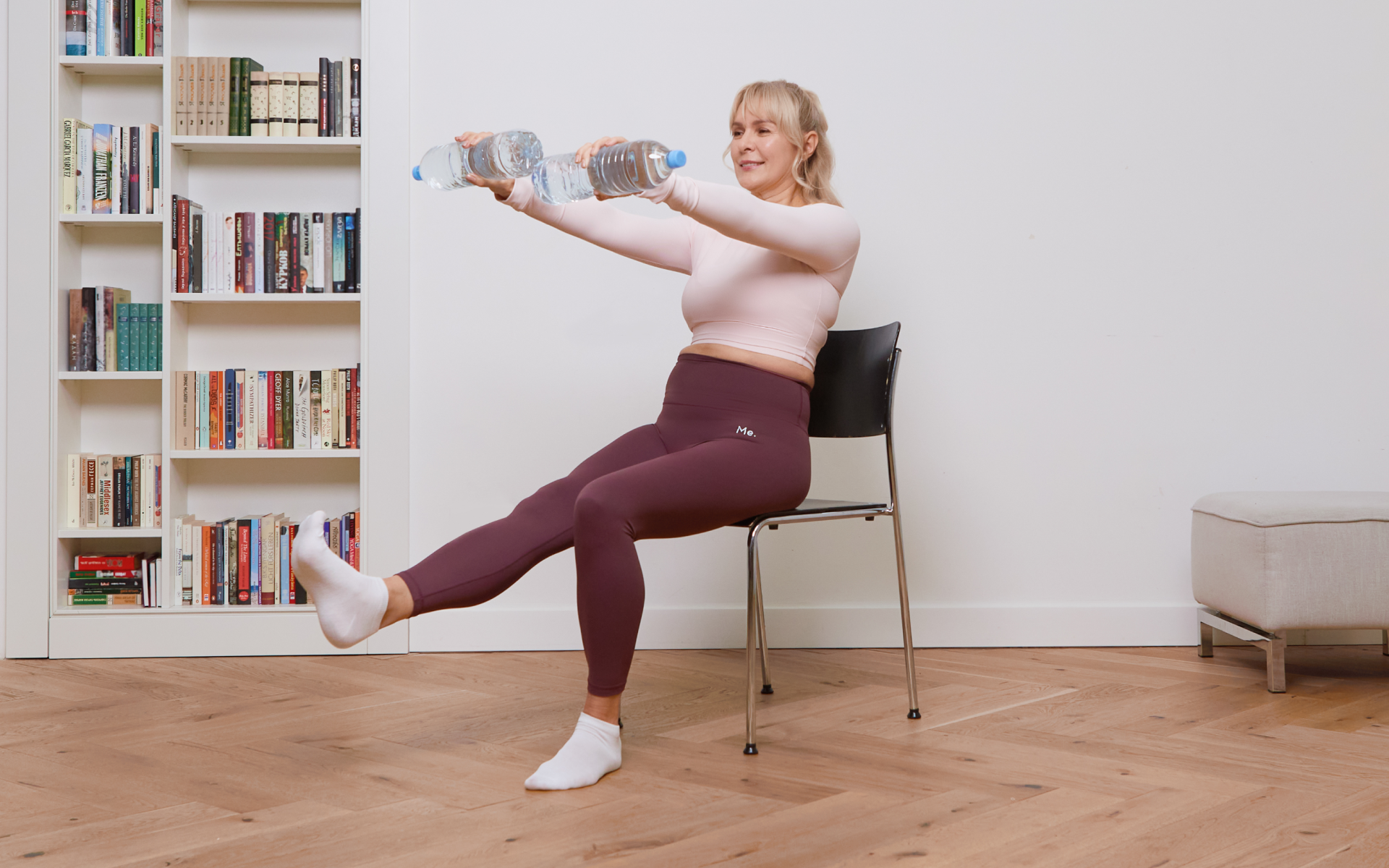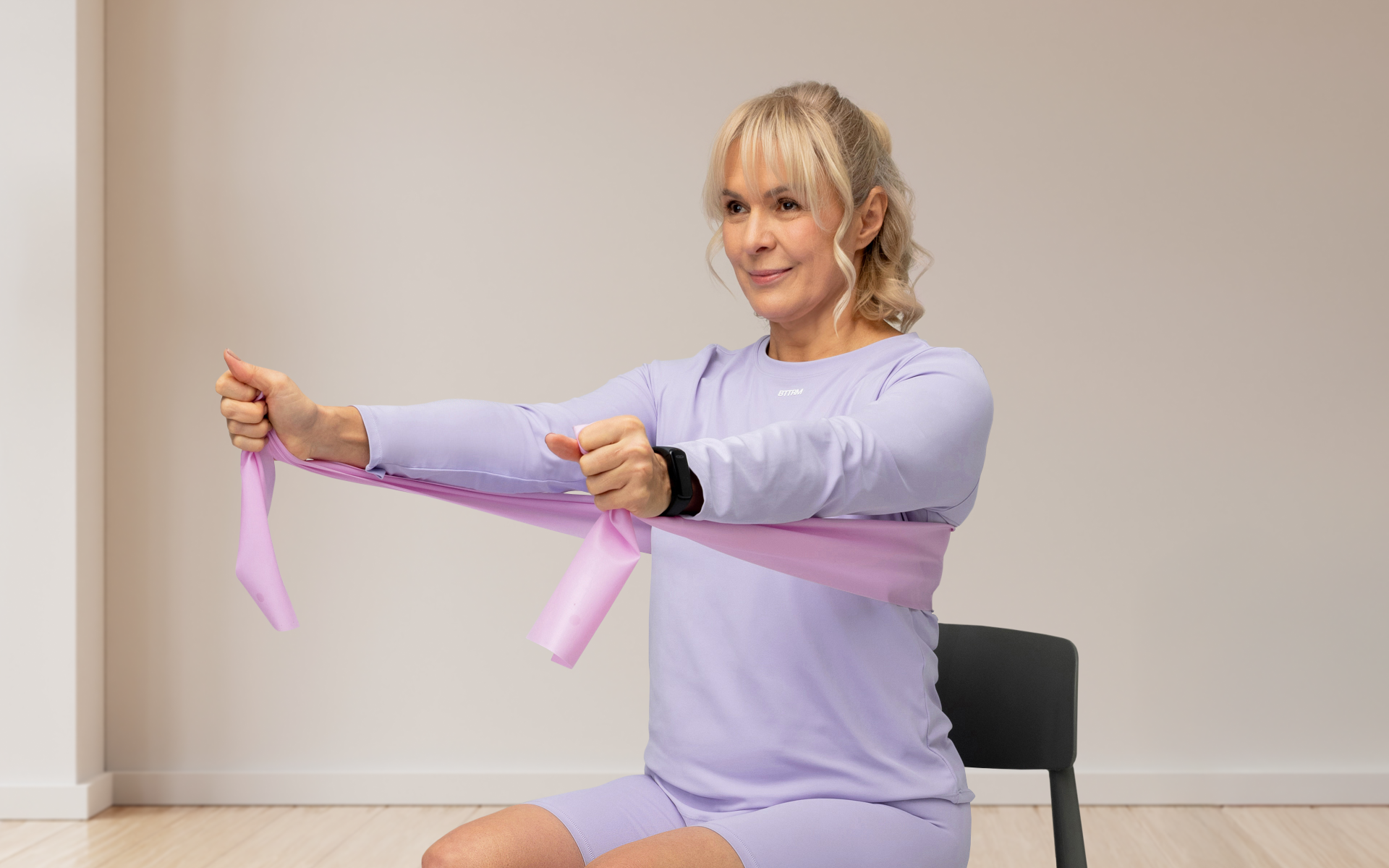Active recovery workouts are an essential yet often overlooked part of a well-rounded fitness routine. Unlike high-intensity training sessions, active recovery focuses on movement performed at a low intensity to help with recovery and promote overall body wellness. These workouts serve as a middle ground between intense exercise and complete rest, allowing the body to repair itself while staying lightly active.
In this article, we’ll discuss what active recovery is, its benefits, and when it should be incorporated into your workout routine. As always, consult with a doctor or healthcare professional before beginning any new fitness regimen, especially active recovery workouts.
What Is an Active Recovery Workout?
Active recovery refers to low-intensity exercises that are done after a more vigorous form of exercise (1). It may involve light activities such as walking, stretching, or slow-flow yoga. Active recovery can also include cross-training, which involves performing different types of exercises, such as swimming or cycling at a low intensity.
The key difference between active recovery and complete rest is the level of intensity. While complete rest means not engaging in any physical activity, active recovery involves gentle movement to promote aid in muscle recovery (1).
Is Active Recovery Worth It?
Active recovery isn’t just another fitness trend, it’s a deliberate practice that bridges intense workouts with proper recovery (2). But is it truly worth taking time out from your busy life to incorporate it into your routine? The short answer is yes, it is worth it, but the reasoning runs much deeper.
When you pull back the curtain on active recovery, it becomes clear why this balanced type of movement is a game-changer, not just for your physical fitness, but also for your overall well-being.
The Unique Benefits of Active Recovery
Active recovery goes beyond simply “resting” in motion. Instead, it serves as a tool for enhancing your body’s ability to repair itself while keeping you in motion. Here’s why it’s worthy of your attention:
1. It Supercharges Recovery
When you work out hard, micro-tears occur in your muscles. These tears are necessary for growth, but they leave your muscles sore. While passive recovery leaves the body to do the fixing on its own, active recovery speeds up the process by increasing blood flow. This ensures more oxygen and nutrients reach damaged tissues, flushing out pesky byproducts such as lactic acid (3).
Active recovery doesn’t just help you get back to working out faster, it helps your body recover better.
2. It Prevents the “Rest Day Slump”
How often have you taken a rest day only to feel stiff, sluggish, or even less motivated the next day? Passive recovery, although sometimes necessary, can leave you feeling stagnant. Active recovery keeps your body engaged in gentle movement, which sharpens your focus and lifts your energy levels. You wake up the next day feeling sharper and ready to go hard again.
When it comes to weight loss, progress is made by inches, not miles, so it’s much harder to track and a lot easier to give up. The BetterMe: Health Coaching app is your personal trainer, nutritionist, and support system all in one. Start using our app to stay on track and hold yourself accountable!
3. It Targets Flexibility and Mobility
Not all workouts cater to the mobility of your joints and connective tissues, particularly if you mostly lift weights or do repetitive cardio. Active recovery workouts, which often include activities such as yoga, Pilates, or dynamic stretching, fill this gap. They improve your range of motion, increase your flexibility, and protect your joints (4). Over time, this means improved biomechanical efficiency during your other workouts.
4. It Benefits Mental Wellness Like Few Things Can
Many people find active recovery days to be mentally refreshing, acting as a form of moving meditation.
Whether it’s the steady rhythm of light cycling, the deep breathing of yoga, or the peaceful solitude of a brisk walk outdoors, active recovery nurtures your mind, which makes it easier to maintain your motivation and break free from burnout.
5. It Balances the “All or Nothing” Mentality
We live in a society where intensity and pushing boundaries are glorified. However, constantly going “beast mode” in the gym can lead to overtraining, injury, and exhaustion. Active recovery breaks this toxic cycle by redefining what progress looks like. It teaches you to value recovery as much as exertion – a crucial mindset for staying in the fitness game for the long haul.
Read more: Smart Carbs: Making Better Carbohydrate Choices
Are There Drawbacks to Active Recovery?
Although the benefits are significant, active recovery isn’t without its limitations or challenges. Here are some scenarios where it may not be the optimal choice:
It’s Not Ideal When You Have Severe Fatigue or Injury
If your body is dealing with extreme fatigue or recovering from an acute injury, complete rest may be the safer bet. Active recovery still requires some energy and movement, which can backfire if your body is crying out for a total stop.
There’s Potential for Over-reliance
Some people may misuse active recovery as an excuse to avoid pushing their limits during regular workouts. While it’s essential to recover, there’s no substitute for putting in the hard work required to achieve fitness gains.
However, these drawbacks are more about knowing when active recovery fits into the grander scheme of your fitness plan, rather than inherent flaws in the practice itself.
Is Active Recovery Better than Doing Nothing?
When it comes to recovery, you’re faced with two core options: active recovery or passive recovery (aka doing nothing). Do you stay moving or do you completely rest?
Passive recovery still has its place. For example, after a grueling event such as a marathon , complete rest may be essential to prevent overexertion (6). However, for individuals who are training consistently, active recovery offers a far more effective way to bridge rest and training.
Think of passive recovery as a band-aid – it’s necessary at times, but temporary. Active recovery, on the other hand, works like a long-term wellness strategy, keeping you engaged and moving toward your goals, even on lighter effort days.
When Passive Recovery Is the Better Option
While active recovery has multiple benefits, it’s important not to dismiss the need for complete rest (passive recovery) when appropriate. Here are some situations where “doing nothing” may be the wiser route (6):
1. Recovering from Injury or Illness
If you’re battling an injury, active recovery may push your body beyond its current capacity, worsening its condition. Similarly, when you’re sick, complete rest allows your immune system to focus entirely on recovery rather than diverting energy elsewhere.
2. Post-Exhaustion or Overtraining
After prolonged, grueling activity such as an ultra-marathon or a week of extreme stress and exercise, you sometimes just need full rest. Passive recovery ensures your body gets a true break to recover fully without expending energy, which is essential for bouncing back stronger.
3. Mental Rejuvenation
If you’re facing psychological burnout, stepping away from movement altogether to watch a movie, read a book, or sleep may be what your mind needs to reset fully.
4. Listening to Your Body
Ultimately, your body knows best. If you’re completely depleted – emotionally or physically – pushing for even gentle movement may do more harm than good. Complete rest is an act of self-care in these situations.
Comparing the Two Approaches
| Aspect | Active recovery | Passive recovery (doing nothing) |
|---|---|---|
| Promotes circulation | Stimulates blood flow, which helps with muscle recovery | Mostly stagnant, slower recovery process |
| Reduces soreness | Eases DOMS by loosening tight muscles | Stiffness may increase from inactivity |
| Mental benefits | Boosting mood | Good for mental rest in states of extreme fatigue |
| Injury prevention | Helps maintain flexibility and joint mobility | No added benefit for mobility or biomechanics, but is often beneficial following extreme fatigue |
| Ideal scenarios | General rest days, soreness prevention, light fatigue | Severe exhaustion, acute injuries, or illness |
Why Active Recovery Often Wins
For the majority of regular workout schedules, active recovery brings the most value. It ensures physical recovery , improves mood, maintains flexibility, and keeps you mentally engaged with movement – even when you’re not working at full capacity. But most importantly, it integrates seamlessly into a long-term fitness strategy, which ensures you avoid plateaus without risking burnout.
Active recovery asks, “How can we recover while staying engaged?” It’s a far cry from laziness – it’s strategically slowing down to come back stronger.
Read more: How to Use the BetterMe Pilates Kit for Active Recovery
What Is an Example of an Active Recovery System?
An active recovery system is a structured approach that is designed to help physical and mental recovery through deliberate, low-intensity movements and restorative practices. One example of an active recovery system is a Weekly Active Recovery Framework that’s seamlessly incorporated into a workout routine to maximize recovery while maintaining light activity.
1. Low-Intensity Cardio Sessions
- Activities: Brisk walking, light jogging, swimming, cycling at an easy pace.
- Purpose: These sessions improve circulation, increasing oxygen and nutrient delivery to muscles while flushing out toxins such as lactic acid (3).
- Frequency: 1-2 times per week, typically on rest days.
- Duration: 20-45 minutes at 50–60% of maximum heart rate.
2. Mobility and Flexibility Work
- Activities: Dynamic stretches (leg swings, arm circles), yoga, or guided Pilates sessions.
- Purpose: Improves joint range of motion, prevents stiffness, and keeps muscles flexible, (4).
- Frequency: Integrated post-cardio or as a standalone 15-30 minute session.
BetterMe: Health Coaching app helps you achieve your body goals with ease and efficiency by helping to choose proper meal plans and effective workouts. Start using our app and you will see good results in a short time.
3. Foam Rolling and Self-Myofascial Release
- Activities: Foam rolling tight areas such as the quads, hamstrings, and calves, or using tools such as massage balls for trigger point release.
- Purpose: Increases blood flow to the area being worked, may break up adhesions in soft tissues, helps loosen tight muscles, and promotes faster recovery (7).
- Frequency: Can be done after light cardio or before bed for 10-15 minutes as needed.
4. Active Recovery Circuit Workout
- Activities: Simple bodyweight exercises that keep intensity low, such as air squats, cat-cow stretches, walking lunges, push-ups on knees, and wall-assisted stretches.
- Purpose: Maintains strength and mobility without stressing the body.
- Frequency: Done on active rest days when you want more variety than just cardio or yoga.
- Duration: 20-30 minutes, focusing on form and slow, controlled movements.
5. Hydration and Nutrition Support
- Activities: Increase water intake, eat healthy foods (e.g. leafy greens, berries), and include protein to help with muscle repair (8).
- Purpose: Boosts internal recovery processes, ensuring the body has the resources it needs to recover efficiently.
- Frequency: No direct scheduling required; integrate these habits daily.
Read more: What Is RPE? Fitness Intensity Guide (2025)
What Are the Tips for a Successful Active Recovery?
- Schedule Recovery Days: Set aside 1-2 days each week for active recovery rather than passive rest. These days should fall after high-intensity sessions.
- Combine Methods: Pair low-intensity cardio with foam rolling, or mobility work with light yoga to cover more aspects of recovery in a single session.
- Adapt to Your Needs: Some weeks may require more intense focus on flexibility or mental relaxation. Customize the system to match your body’s demands.
- Listen to Your Body: If you’re unusually fatigued, scale back or replace with gentler forms of movement such as just stretching.
Active recovery is often better for enhancing recovery and maintaining mobility, as it promotes blood flow, reduces muscle stiffness, and supports flexibility. However, passive recovery is better in cases of severe fatigue, injuries, or illness when the body needs complete rest (6). Yes, recovery runs can be effective as low-intensity sessions to improve circulation, flush out waste products, and enhance endurance. They should be short and slow-paced to avoid overexertion and allow your body to actively recover. Three days of recovery may be sufficient, depending on the intensity and type of exercise. For moderate workouts, one to two days of active recovery can often suffice. However, high-intensity or grueling activities may require more time, particularly if combined with passive recovery. Swimming is an excellent form of active recovery due to its low-impact nature. It engages multiple muscle groups, promotes circulation, and reduces joint strain while providing a gentle full-body workout.Frequently Asked Questions
Is active or passive recovery better?
Are recovery runs a good idea?
Is 3 days enough recovery?
Is swimming good for active recovery?
The Bottom Line
The road to fitness success isn’t a sprint, it’s a marathon. While intense training builds strength and endurance, it’s active recovery that ensures sustainability. Avoiding burnout, managing injuries before they occur, and strengthening weak areas of your physical foundation are keys to ongoing progress – and this is where active recovery shines.
If your goal is to be fit, functional, at 30, 40, or 50, then active recovery isn’t just helpful, it’s essential. It equips your body for the long term and, just as importantly, makes the process of getting there enjoyable.
DISCLAIMER:
This article is intended for general informational purposes only and does not serve to address individual circumstances. It is not a substitute for professional advice or help and should not be relied on for making any kind of decision-making. Any action taken as a direct or indirect result of the information in this article is entirely at your own risk and is your sole responsibility.
BetterMe, its content staff, and its medical advisors accept no responsibility for inaccuracies, errors, misstatements, inconsistencies, or omissions and specifically disclaim any liability, loss or risk, personal, professional or otherwise, which may be incurred as a consequence, directly or indirectly, of the use and/or application of any content.
You should always seek the advice of your physician or other qualified health provider with any questions you may have regarding a medical condition or your specific situation. Never disregard professional medical advice or delay seeking it because of BetterMe content. If you suspect or think you may have a medical emergency, call your doctor.
SOURCES:
- Active Recovery: Reduce Fatigue and Enhance Performance (2020, issaonline.com)
- Effect of active recovery using individual maximum exercise capacity: a pilot study (2024, ncbi.nlm.nih.gov)
- ACE-SPONSORED RESEARCH: Active vs. Passive Recovery and Exercise Performance: Which Strategy Is Best? (2018, acefitness.org)
- Stretching: Focus on flexibility (2023, mayoclinic.org)
- The Effects of Acute Exercise on Mood, Cognition, Neurophysiology, and Neurochemical Pathways: A Review (2017, ncbi.nlm.nih.gov)
- The Importance of Using Active & Passive Recovery Strategies (n.d., americansportandfitness.com)
- THE EFFECTS OF SELF‐MYOFASCIAL RELEASE USING A FOAM ROLL OR ROLLER MASSAGER ON JOINT RANGE OF MOTION, MUSCLE RECOVERY, AND PERFORMANCE: A SYSTEMATIC REVIEW (2015, ncbi.nlm.nih.gov)
- Nutrition for Muscle Repair and Recovery (n.d., blog.nasm.org)









